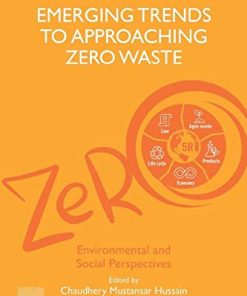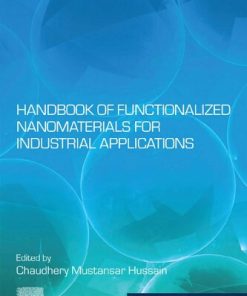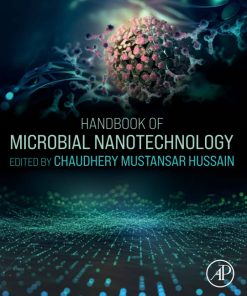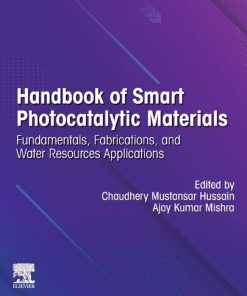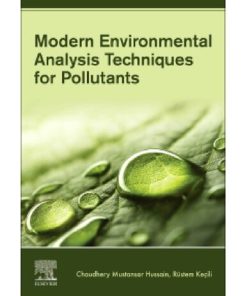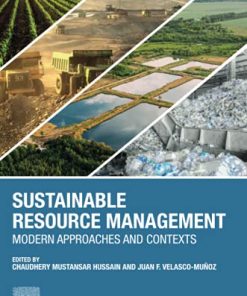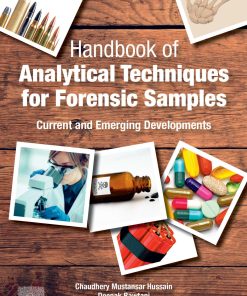Handbook of Nanomaterials in Analytical Chemistry Modern Trends in Analysis 1st edition by Chaudhery Mustansar Hussain 0128172908 9780128172902
$50.00 Original price was: $50.00.$25.00Current price is: $25.00.
Handbook of Nanomaterials in Analytical Chemistry: Modern Trends in Analysis 1st edition by Chaudhery Mustansar Hussain – Ebook PDF Instant Download/DeliveryISBN: 0128172908 9780128172902
Full download Handbook of Nanomaterials in Analytical Chemistry: Modern Trends in Analysis 1st edition after payment.
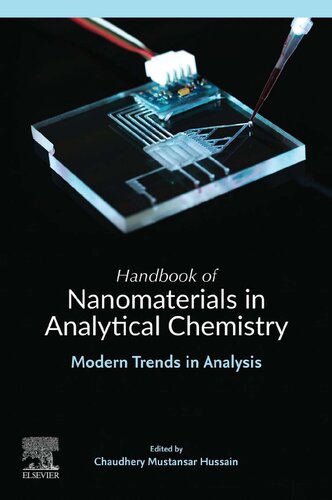
Product details:
ISBN-10 : 0128172908
ISBN-13 : 9780128172902
Author : Chaudhery Mustansar Hussain
Handbook of Nanomaterials in Analytical Chemistry: Modern Trends in Analysis explores the recent advancements in a variety of analytical chemistry techniques due to nanotechnology. It also devotes several chapters to the analytical techniques that have proven useful for the analysis of nanomaterials. As conventional analytical chemistry methods become insufficient in terms of accuracy, selectivity, sensitivity, reproducibility, and speed, recent advances have opened up new horizons for chemical analysis and detection methods. Chapters are authored by experts in their respective fields and include up-to-date reference materials, such as websites of interest and suggested reading lists on the latest research.
Handbook of Nanomaterials in Analytical Chemistry: Modern Trends in Analysis 1st Table of contents:
Section I: Modern age of analytical chemistry—Nanomaterials (NMs)
1. Carbon nanodots from natural (re)sources: a new perspective on analytical chemistry
Abstract
1.1 Introduction
1.2 Synthesis of carbon nanodots
1.3 Characteristics of carbon nanodots
1.4 Analytical applications of carbon nanodots fluorescence systems
1.5 Mechanisms of CND-based photoluminescent analytical systems
1.6 Conclusions
References
2. Modern age of analytical chemistry: nanomaterials
Abstract
2.1 Introduction
2.2 History of analytical chemistry
2.3 History of nanotechnology
2.4 Classification of nanomaterials and application of nanomaterials as tools and analytes
2.5 Conclusions
References
Section II: Nanomaterials (NMs) in sample preparation
3. Nanomaterials for microextraction techniques in bioanalysis
Abstract
3.1 Introduction
3.2 Nanomaterials classifications
3.3 Nanomaterials application in microextraction methods
3.4 Recent nanomaterials applications in microextraction techniques
3.5 Concluding remarks
References
4. Recent advances in solid-phase extraction techniques with nanomaterials
Abstract
4.1 Introduction
4.2 The application of nanomaterials in sample preparation
4.3 Conclusion
Acknowledgment
References
5. The use of magnetic nanoparticles in sample preparation devices and tools
Abstract
5.1 Introduction
5.2 Synthesis of magnetic nanoparticles
5.3 Solid-phase extraction
5.4 Magnetic solid-phase extraction
5.5 Conclusion and future trends
References
Section III: Nanomaterials (NMs) in separation
6. Separation techniques with nanomaterials
Abstract
6.1 Introduction
6.2 Nanomaterials in separation techniques
6.3 Separation techniques with nanomaterials
6.4 Potential applications of nanomaterial-based separation techniques
6.5 Conclusions and future prospects
References
Further reading
7. Membrane applications of nanomaterials
Abstract
7.1 Introduction
7.2 Traditional membranes
7.3 Carbon nanomaterial-based membranes
7.4 Nanoparticle-based membranes
7.5 Molecularly imprinted polymer-based membranes
7.6 Conclusions and future trends
References
Section IV: Nanomaterials (NMs) in Integration (micro-TAS & Lab on Chip Analytical chemistry with Nanomaterials (NMs)
8. Micro total analysis systems with nanomaterials
Abstract
8.1 Introduction
8.2 The components of micro total analysis systems
8.3 Advantages and disadvantages of micro total analysis systems
8.4 Applications of micro total analysis systems
8.5 Conclusions
References
Section V: Nanomaterials (NMs) in detection
9. Electrochemically engineered nanoporous photonic crystal structures for optical sensing and biosensing
Abstract
9.1 Introduction
9.2 Fabrication and properties: nanoporous anodic alumina as effective medium
9.3 Nanoporous anodic alumina photonic crystals as optical sensing platforms
9.4 Conclusions
References
Further reading
10. Pressure and temperature optical sensors: luminescence of lanthanide-doped nanomaterials for contactless nanomanometry and nanothermometry
Abstract
10.1 Introduction
10.2 Temperature measurements—general remarks
10.3 Remote, contactless temperature sensing
10.4 Nanothermometry
10.5 High-pressure measurements—general remarks
10.6 High-pressure luminescence measurements
10.7 Optical nanosensors of pressure—nanomanometry
10.8 Concluding remarks
References
11. Nanoparticle-integrated electrochemical devices for identification of mycotoxins
Abstract
11.1 Introduction
11.2 Surface modification of electrodes for electrochemical sensing of mycotoxins
11.3 Summary
Acknowledgments
References
Further reading
12. Functional nanomaterial-derived electrochemical sensor and biosensor platforms for biomedical applications
Abstract
12.1 Introduction
12.2 Noble metallic nanoparticles
12.3 Metal oxide nanomaterials
12.4 Carbon nanomaterials
12.5 Polymer nanomaterials
12.6 Bionanomaterials
12.7 Conclusion
Acknowledgments
References
13. Nanomaterial-based sensors
Abstract
13.1 Introduction
13.2 Graphene
13.3 Carbon nanotubes
13.4 Other carbon-based materials
13.5 Non-carbonaceous nanomaterials
13.6 Nano/micromotors
13.7 Conclusions
Acknowledgments
References
14. MXene-based sensors and biosensors: next-generation detection platforms
Abstract
14.1 Introduction
14.2 MXene-based sensing and biosensing for various analytes
14.3 Conclusion
References
Section VI: Functionalized nanomaterials for analytical chemistry
15. Functionalized nanomaterials for sample preparation methods
Abstract
Abbreviations
15.1 Introduction
15.2 Functionalized nanomaterials for sample preparation methods
15.3 Conclusion
References
Further reading
16. Surface-modified metal nanoparticles for recognition of toxic organic molecules
Abstract
16.1 Introduction
16.2 Colorimetric recognition of pesticides by surface-modified Ag nanoparticles
16.3 Colorimetric recognition of pesticides by surface-modified Au nanoparticles
16.4 Summary
Acknowledgment
References
Section VII: Nanomaterials: risk, toxicity, and regulatory norms
17. Safety risk, ELSI (ethical, legal, social issues), and economics of nanomaterials
Abstract
17.1 Introduction
17.2 Nanomaterials and environment
17.3 Economics, modern policy, and legalization of nanotechnology
17.4 Conclusion and future trends
References
Further reading
Section VIII: Analysis of Nanomaterials
18. Advanced micro- and nanoscale characterization techniques for carbonaceous aerosols
Abstract
18.1 Introduction
18.2 Analytical characterization techniques
18.3 Summary
References
19. Issues related with the analysis of nanomaterials
Abstract
Abbreviations
19.1 Introduction
19.2 Nanomaterial characteristics: identifying key attributes
19.3 Analyzing nanomaterial physical attributes with automated and standardized methods
19.4 Analyzing attributes of nanomaterials using other methods
19.5 Conclusion
References
Further reading
Section IX: Future of analytical chemistry with nanomaterials
20. Graphene quantum dots in biomedical applications: recent advances and future challenges
Abstract
20.1 Synthetic considerations
20.2 Biomedical applications of graphene quantum dots
20.3 Toxicity research of graphene quantum dot materials
20.4 Conclusion and perspectives
People also search for Handbook of Nanomaterials in Analytical Chemistry: Modern Trends in Analysis 1st:
handbook of chemistry and physics
handbook of chemistry and physics pdf
handbook of modern ion beam materials analysis pdf
analytical chemistry handbook
a handbook of decomposition methods in analytical chemistry pdf
Tags:
Handbook,Nanomaterials,Analytical Chemistry,Modern Trends,Analysis,Chaudhery Mustansar Hussain
You may also like…
Uncategorized
Emerging Trends to Approaching Zero Waste: Environmental and Social Perspectives 1st Edition
Technique - Nanotechnology
Engineering - Environmental
Chemistry - Analytical Chemistry




